Beaching a Boat
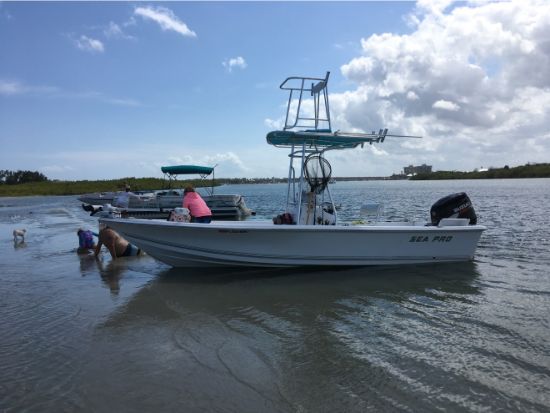
Beachy keen – There are a lot of reasons why people beach their boats. Maybe they want to get out and wade or fish. Maybe it’s a family day of swimming or picnicking, or maybe you just want to take a stroll on the white sand.
Mooring technique – Whatever the reason for using this mooring technique – that’s what it really is, when you get to brass tacks – it can be an utter disaster if done improperly or without foresight.
What’s the big deal about beaching?
Hull abrasion – Sand and rocks are naturally abrasive. This can be a problem – not only will beaching mar the hull, but the hull’s gel coat and barrier coat will eventually wear away and the boat could end up with water intrusion in the fiberglass.
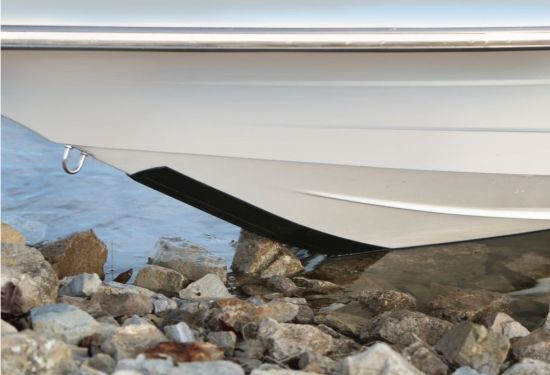
Hull protection – Hull abrasion can be prevented by adding a hull guard of some kind. However, hull abrasion is not the biggest problem most boaters will encounter when beaching.
Beached Whale
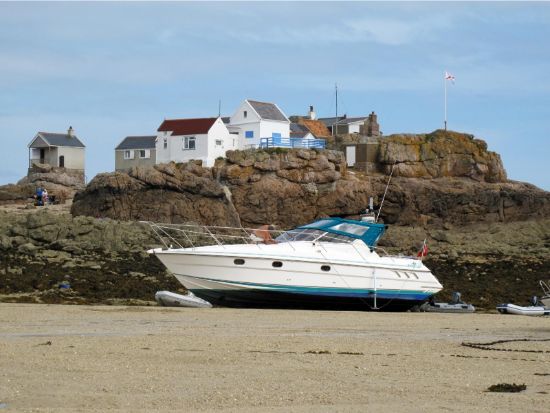
Tides – When a boater pulls up on the beach, without keeping a close eye on the tidal change, they can find their boat high and dry at the end of the day. This means you won’t be going anywhere until the water comes back in and floats your boat again.
More than an inconvenience – Many V-hull boats will roll to one side or the other instead of resting upright on the keel, stressing the hullsides and gunwales. Even a flat bottom boat that does remain upright is susceptible to damage.
Larger inboard boats – The running gear of larger boats can be significantly damaged and repairs of rudders, props, and shafts can be costly.
Rocks, shell, or chunk of coral – The weight of the boat resting on a hard object can do damage all by itself.
Boat wakes and waves – More damage usually occurs when a wave hits the back of the boat and moves it from side to side. Now, the weight of the boat is rubbing against that sand or hard item, gnawing away at the fiberglass.
Through-hulls – In addition to hull damage, it is important to check livewell and raw water intakes that may become filled with sand or other beach-bound debris.
Water over the transom – A boat that is laying off at an angle with one side of the transom lower than the other is susceptible to a wave crashing into the boat transom and breaching the lower section, filling it up with saltwater. If the boat is not self-bailing, this will cause significant damage to the boat and make it harder to refloat.
Swimming Free

Secure the boat – Utilize the boats ground tackle. The greater the scope, (length of line or chain from the boat to the anchor) the more secure. Smaller boats without ground tackle can use a line tied to a stake in the sand.
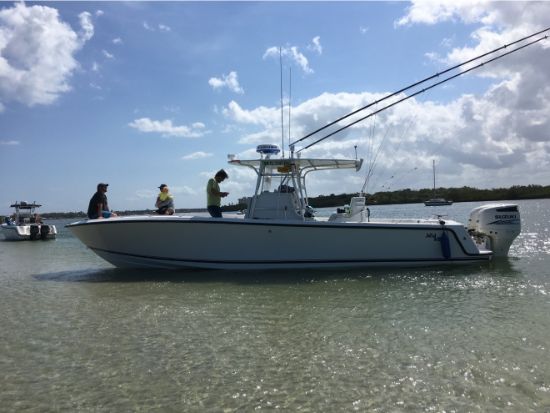
Rising tide – Beaching with a rising tide has its issues as well. Wind and wave action may turn a boat sideways on the rising tide, grind in the sand for an hour or two, then be left high and dry until the next tide.
Running gear damage – As soon as the water rises enough to create slack in the anchor line, either the wind, the waves, or both will turn it sideways. Wave action hitting the boat can cause serious damage to the running gear.
Beach Bum
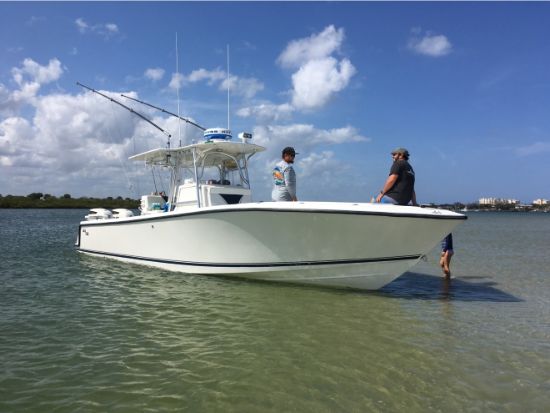
Pay attention to your boat – Wade 10’ (3.05 m) away and take notice of any potential problems before they develop. Potential problems are more likely to affect the boat if you beach it, then walk away for a while. You can still do this safely, too, if you beach the boat properly in the first place.
1. Frequent beaching – When beaching a boat regularly or for extended periods of time, it is recommended to purchase hull guards as mentioned earlier in this article. Gel coat damage lowers the boat’s resale value, even if the damage is only cosmetic.
2. Second anchor – Outfit your boat with a second anchor. Securing the boat fore and aft keeps the boat from turning sideways on a rising tide.
3. Ground tackle – Each beaching anchor should have at least 35’ (10.67 m) of rode with a short top-shot of chain. Since it’ll usually be deployed on sandy bottoms, a Danforth-style anchor is the best design to choose.
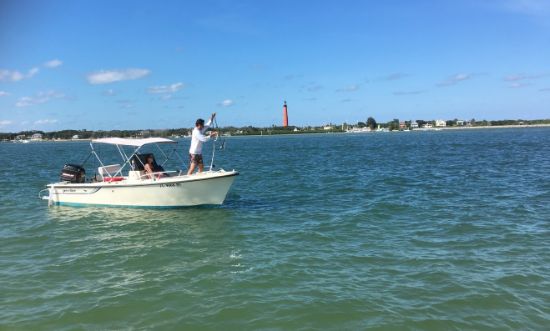
Deploy the bow anchor first – The beaching anchor should be deployed when you’re about 10’ (3.05 m) off the beach in shallow water. It is best to shut down the boat at this point and step off.
Place the second anchor in the sand by hand – Point the flukes down and push on the horns to be sure it has a good set. Then, run the line up to the down-wind stern cleat.
Push the boat the rest of the way to the beach – Not only will powering up onto the sand be harder on the boat, but beaching is often when boaters damage their props. You never know where a rock or an old abandoned anchor will be sitting. If you’re beaching, you’re usually in shallow water, so play it safe.
The one exception – For instances when you are on a beach with an extremely steep drop-off, where walking isn’t an option, go in slow by bumping your motor in and out of gear.
1. Deploy the stern anchor first – About 20’ (6.1 m) from the shoreline, deploy the stern anchor while keeping the rode clear of the propeller and secure it to the up-wind stern cleat, allowing for slack.
2. Bow anchor – When you have the boat positioned, walk up to the bow and hand-carry the bow anchor at least 25’ or 30’ (7.6 or 9.1 m) up the beach. Again, push it into the sand with the flukes pointing down.
3. Position the boat – Tighten down on the bowline and cleat it off. After cleating off the bowline, remove the slack in the aft line.
4. Before enjoying the beach – When beached properly in this fashion, you can easily adjust the boat’s position to account for tidal changes of any kind by slacking one line out and pulling the other tighter. Just always remember to go back and re-tighten the first one you adjusted, since it’ll be changed slightly when you adjusted the second line.
